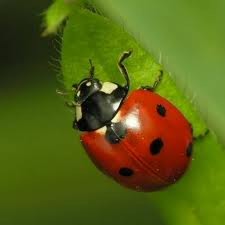Make Simple Lawn Care Choices
 Choose Native Plants
Choose Native Plants
Replace a patch of high-maintenance lawn with low-maintenance native perennial plants. Plants native to the central Ohio area thrive in our soil and weather conditions, requiring less water, fertilizer, pesticide and attention. In addition, native plants with long roots slow the flow of stormwater, soak up and filter contaminants and hold the soil in place, thereby reducing errosion.
The Purple Coneflower (Echinacea purpurea) pictured makes a beautiful addition to the landscape. Flowering from late spring into autumn, it thrives in our climate, spreads and requires little to no maintenance. Check list of native plants common to each of our water supply reservoirs for ideas.
Spot Treat Problem Areas
The runoff of chemicals from fertilizers, herbicides and pesticides is a major cause of non-point source pollution. Follow the instructions carefully, apply only the recommended amount and use these products as sparingly as possible. Check the weather forecast to avoid having to repeat the application. Better yet, hand pick weeds when possible or consider less toxic alternatives.
Consider Less Toxic Alternatives
Long-handled weed pullers grab dandelions easily, especially when the soil is moist. Allow beneficial insects like lady bugs, praying mantids, and lacewings (photos below in same order, click image to see larger; mantids are hatching) into your garden to feed on pests. For better success, replace diseased or problem plants with native varieties. Check our list of native plants common at each of our water reservoirs for ideas.



Compost & Mulch Yard Waste
When mowing the lawn, use the mulching feature rather than bagging the clippings. Returning grass clippings to the yard keeps your lawn healthy and saves space in the landfill. In fact, the clippings contain valuable nutrients that can generate up to 25% of your lawn's total fertilizer needs. Grass clippings do not contribute to thatch since they are 75 - 85% water and decompose readily.
Build healthy soil by recycling organic material for plant growth. Leaves, grass clippings, weeds, prunings, dead flowers and ash from burnt wood can be composted...not only to reduce yard waste, but to nourish your landscaping. Composted materials provide important nutrients for soil and plants. More about Backyard Composting (includes instruction and troubleshooting tips). For more information on composting, call 614-645-3153.
 Dispose of Yard Waste Properly, Including Pet Waste
Dispose of Yard Waste Properly, Including Pet Waste
Yard waste must be properly prepared and placed for collection. Leaves swept into the curb will not be collected in Columbus. Dumping yard waste into storm drains or waterways adds excess nutrients to the water, can clog the drains and contribute to roadway flooding; and it is illegal.
The Com-Til Compost Facilty accepts yard waste free of charge, year round. View the Yard Waste Disposal page for additional details and disposal options.
Animal waste contributes to surface and ground water bacteria, so it is important to remove pet waste from your yard and pick up after him at the park, or wherever he goes when you're out walking. Place it in the trash, bagged, or flush smaller quantities down the toilet.